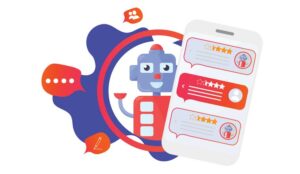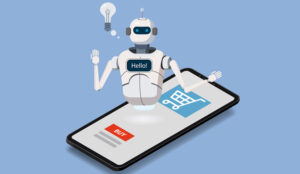Did you know that the abandonment rate for an e-commerce site varies from 55 to 80%? These are HUGE losses every year. You can avoid these same losses by deploying a chatbot to help out your customers in their journey with your brand.
Why Is It Vital That You Transform Your Customer Journey?
The customer journey refers to the entire path a prospect follows when interacting with you. Another definition of the customer journey is the succession of stages they go through, from the moment a prospect identifies a need to the moment they become a customer of yours.
Nowadays, digital technology plays an increasingly important role in the lives of consumers. This digitalization transforms their habits and confronts them with a multitude of communication channels. As internet users have ever higher demands, offering an optimal and efficient customer experience is not an easy task.
To achieve this, you need to be present everywhere, at all times, and with constant quality of responses. But before doing so, it is essential to analyse your customer journey in order to identify some key moments. Transforming your customer journey accordingly will help you achieve the following goals:
- Retain visitors
- Increase conversion
- Turn visitors into brand loyalists
- Collect data and identify potential customer needs and improvements.
4 Chatbot Use-Cases Within the Customer Journey
Every customer journey starts the same way: the awakening of a need. When a customer becomes aware of a “lack”, they will seek every means to fill it, starting with a thorough research phase.
A conversational agent or AI chatbot can prove to be a particularly effective solution within the customer journey.
A Chatbot as an Intelligence Tool
According to a Wavestone study, one of the three main features that encourages internet purchases is “access to very detailed information on a product or a service”. It is essential that you have this type of information on your website!
What better way to do this than with an AI chatbot? With just a simple conversation, a virtual agent makes it possible to help your customers find a multitude of information instantly.
A Chatbot as a Sales Consultant
When it comes to the digital customer journey, the customer experience may unfortunately lack a bit of humanity. A conversational agent has the ability to personalize the customer journey and have a positive impact on your customers’ engagement.
For example, a sales support chatbot that provides product recommendations based on what the user is looking for is a great way to make the customer experience more human. Creating such a chatbot can be a laborious task, but it is vital to your business. Setting up a bot that can accompany your customers is a real asset that will help you make more sales and build customer loyalty.
A Proactive Chatbot
A feature that helps increase your conversion rate is a proactive triggering of your chatbot.
Setting up a proactive chatbot on a product page or in the validation phase is an excellent way to eliminate users’ objectives and get them to buy. For example, you can offer a coupon code, display customer reviews, or provide information on payment methods.
A Chatbot for 24/7 Support
According to a Baymard Institute study, the abandonment rate of an e-commerce site varies from 55 to 80%, representing annual losses of nearly 18 trillion dollars (Forrester study)!
To avoid this, there is only one solution: assistance available at all times.
Many of the customers’ requests occur outside of working hours, so they need a way to find answers to crucial questions when your advisors are not available. Chatbots offer the ability to get answers and support 24 hours a day, 7 days a week. If you can provide the right information at the right time, your customers will be reassured and ready to take the final step: buying from you.
If your customer journey is made up of several contact points, it is essential to be present everywhere, and the omnichannel chatbot is a great way to achieve this.
An omnichannel chatbot aims to equip several customer support channels with a bot. The goal is to have consistent knowledge while adapting the response format to the constraints of each channel, whether it is chat, social media, phone or email.
Setting up an omnichannel chatbot allows you to create a synergy between all the channels used by your customers and guarantees constant assistance. By providing such optimal customer support, you will build customer loyalty.
Implementing a Chatbot in the Customer Journey
Before setting up a bot on one or more contact points of your customer journey, it is important to frame its field of action. Here are some best practices:
Analyse Your Customer’s Buying Journey
By breaking down and studying all the stages of your customer journey, you will be able to identify where the strengths and weaknesses lie.
Adapt Your Bot’s Speech
If it is essential to communicate all kinds of information to your customers, the question remains as to what information to communicate and how. If you are able to relay a relevant message when your customer needs it the most, your bot will become a vital tool within your customer journey.
Test & Learn
The best way to test your bot and assess whether it plays a crucial role in your customer journey is to apply the Test & Learn method. Deploy an initial version of your bot, evaluate its impact, monitor the first results and act accordingly. This method will allow you to respond accurately to the requirements of your users.
Chatbot solutions are high-performance devices designed to bring autonomy and satisfaction to your customers. However, you must not neglect the human dimension! Your teams also have a role to play in a chatbot project:
- When a bot fails to answer questions: your virtual agent must be able to escalate to a human advisor, passing on all the information.
- To build your bot’s knowledge base: appoint a Botmaster who will focus on building an efficient response base and monitor your chatbot’s overall performance.
Author: Robyn Coppell
Published On: 30th Sep 2020 - Last modified: 22nd Dec 2023
Read more about - Guest Blogs, Inbenta















